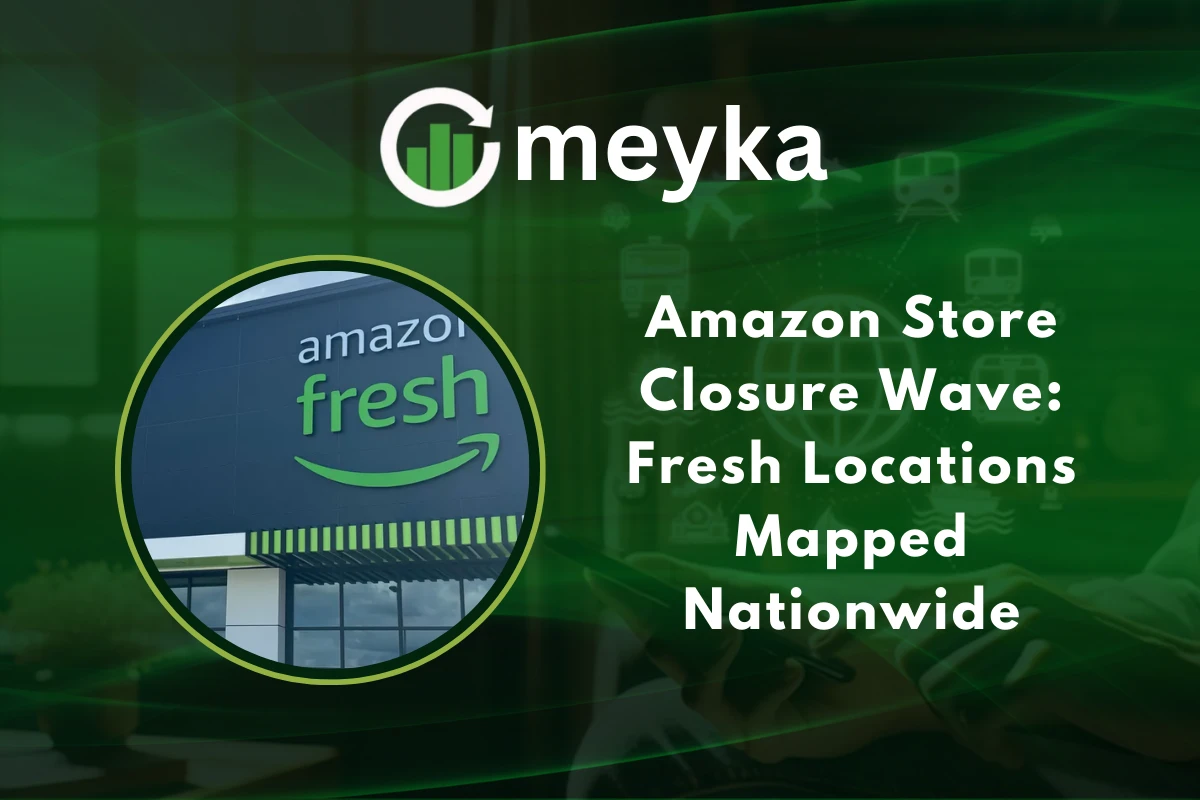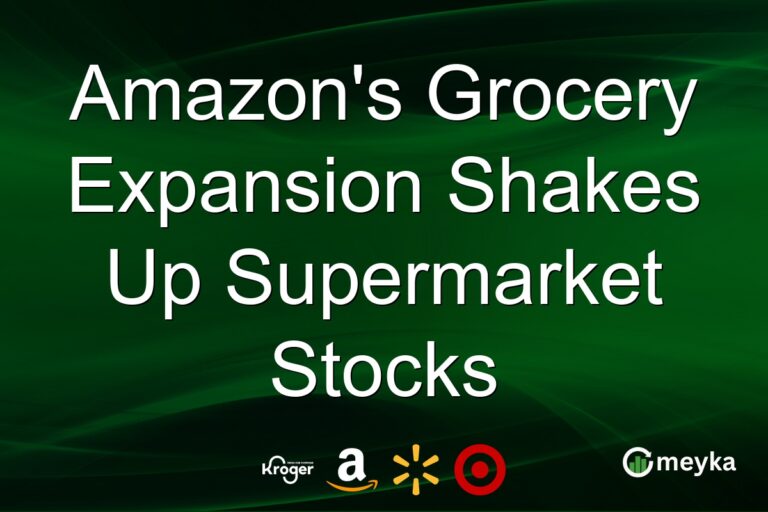Amazon Store Closure Wave: Fresh Locations Mapped Nationwide
Amazon has announced a sharp retreat from its high-street grocery experiment in the UK. The company plans to close 19 Amazon Fresh stores after assessing performance and rising demand for online grocery delivery.
The move affects dozens of staff and reshapes the grocery map across London and nearby towns. This story matters because it signals a strategic shift from physical convenience stores toward Amazon’s online grocery partnerships and delivery network.
Why is Amazon making this change? Amazon says customers are shopping for groceries online more than before, and the company wants to scale delivery instead of running small high-street stores.
Amazon Store Closures: Full List and Map
What’s closing
Amazon confirmed it is proposing to shutter all 19 Amazon Fresh supermarkets in the UK. Time Out and The Independent published full lists of affected sites, showing a heavy concentration in London and Greater London suburbs.
Locations named include Aldgate, Angel, East Croydon, Euston, Holborn, Kensington, Liverpool Street, Moorgate, Monument, Notting Hill Gate, Southwark, Wembley, White City, and others. The full list is available in the reporting by Time Out and The Independent.
Where are the closures concentrated? Most closures are clustered in London; Time Out notes 18 of the 19 locations are in London, while The Independent frames the closures as across Greater London.
Who is affected by the Amazon Closure?
The Amazon Fresh estate employs roughly 250 people across its UK stores. Amazon’s statement says not all employees are expected to be impacted, and the company has launched a formal consultation with staff in line with UK employment rules.
Amazon Store Strategy: Why the Closures?
The online grocery shift
Amazon explains the decision as part of a pivot to online-first grocery. The company told staff it has seen “very substantial” growth in online grocery delivery and is expanding capacity for same- or next-day deliveries. In 2024, Amazon said it delivered hundreds of millions of everyday essentials with same- or next-day service, up nearly 20% year-on-year, underpinning the case to invest in delivery rather than small-format stores.
Why is online growth so important? Online grocery scales with logistics and partnerships; it reduces the fixed costs of running many small physical stores while offering a broad reach through delivery.
The tech experiment didn’t fully stick
Amazon Fresh stores were shorthand for cashierless and high-tech convenience shopping. But reporting shows the format never attracted enough regular footfall to justify the footprint.
Time Out notes early closures as far back as 2023, when some branches were already shut after lower-than-expected uptake of till-less shopping. The lesson: novelty alone doesn’t guarantee sustained retail traffic.
Amazon Store Impact: Shoppers, Staff, and Suppliers
What shoppers will feel
For many London shoppers, the closures mean fewer immediate grab-and-go options by tube stations and high streets. But Amazon argues online partners will plug gaps: it plans to expand grocery delivery through deals with Morrisons, Iceland, Co-op, and Gopuff, aiming to broaden coverage for Prime members.
By early 2026, Amazon expects more Prime members in the UK will have access to at least one of these grocery delivery options.
Will prices or services change for customers? Amazon says the change is operational, not a retreat from grocery: delivery options and online selection will expand, but in-store browsing options in affected neighborhoods will shrink.
Staff and community impact
About 250 staff work across the Amazon Fresh estate; Amazon opened a consultation with employees to discuss redundancies or redeployment. The Independent reports that not all will be impacted and that five stores may be converted into Whole Foods, which could preserve some roles.
Still, closures often ripple through local suppliers and shift footfall patterns for neighboring businesses.
Amazon Store to Whole Foods Conversions
A partial second life
Amazon confirmed plans to convert five of the Fresh sites into Whole Foods Market locations. That move could soften the blow for some communities by keeping food retail in place under a different banner. The Whole Foods brand tilts toward premium grocery and may change product mix and pricing in converted locations.
Time Out and The Independent both report the five-store conversion plan but note Amazon has not disclosed which exact stores will reopen as Whole Foods.
Does this save jobs? Conversions may allow Amazon to retain some staff, but terms and rehiring specifics are subject to local consultation and store-by-store decisions.
Amazon Store Closures: Market Reaction and Expert Views
Industry perspective
Retail analysts see the closures as an admission that dense urban test stores are a tough path to scale for grocery. PYMNTS notes that while Amazon’s e-commerce engine is powerful, grocery remains a category where physical reach and low prices still favor entrenched chains.
The closures mirror a broader pattern: Amazon will lean on logistics partnerships to extend grocery reach without the cost of running many small stores.
What does this mean for rivals? Supermarket chains like Tesco and Sainsbury’s may see an opportunity to capture shoppers who prefer brick-and-mortar trips; meanwhile, Amazon’s expanding delivery partnerships will intensify digital competition.
Consumer reaction
Local reaction is mixed. Some shoppers regret the loss of quick, cashierless convenience near transport hubs; others welcome clearer delivery options tied to Prime.
Time Out and local reporting show curiosity, disappointment, and pragmatic acceptance that high-street grocery formats can be fragile when they depend on tech novelty over steady shopper habits.
What Comes Next for Amazon Store Strategy?
Bigger picture for retail
This closure wave is a clear signal: Amazon will double down on online grocery delivery and partner networks in the UK instead of persisting with widespread Fresh stores. The company aims to make grocery a delivery-first offering for Prime members by early 2026, while selectively using Whole Foods where a physical premium presence makes sense.
Is this the end of Amazon’s retail experiments? Not necessarily. Amazon will still test formats and technologies, but the lesson is to match format to demand. In dense cities where footfall doesn’t hold up, delivery and partnerships may be more durable.
Conclusion
The Amazon Store closure wave in the UK is a turning point for Amazon’s grocery play. Nineteen Amazon Fresh outlets will close, five may reopen as Whole Foods, and roughly 250 employees are part of the company consultation. Amazon’s logic is simple: scale where customers are shopping more, online.
For shoppers, the high-street convenience model recedes; for Amazon, logistics and partner networks take centre stage. The closures offer a clear case study in retail strategy: technology alone won’t sustain format risk without consistent customer adoption.
FAQ’S
Amazon Fresh stores are closing due to rising operational costs, slower foot traffic, and a strategic pivot toward online grocery sales and delivery.
Some Amazon Go locations in London and Greater London are shutting down as part of Amazon’s broader effort to streamline physical retail operations.
Amazon Fresh stores use Just Walk Out technology, where shoppers scan in with the app, pick items, and leave without checkout, payments are processed automatically.
Before the closures, Amazon had 19 Fresh stores in the UK, mostly concentrated in London and surrounding areas, alongside its Whole Foods stores.
Amazon shut down some physical stores because customer demand leaned heavily toward online grocery shopping, making brick-and-mortar outlets less profitable.
Amazon is reopening select Fresh stores with a new format, focusing on improved layouts, better technology, and integration with its online grocery ecosystem.
Disclaimer
This is for information only, not financial advice. Always do your research.






